[youtube]http://youtu.be/X7BNICtt2lo[/youtube]
The above spectacular animation of the chicken-sized dinosaur Anchiornis Huxleyi
was generated by National Geographic from the latest research
(see discussion below other photos)
Sinosauropteryx
To the naked eye, the fossilized feathers are fine hairlike filaments that give the impression of being soft and downlike. Some researchers proposed that these structures were not feathers at all, however, but the remains of collagen from inside the tail.
The new study shows that these structures — visible in this fossil Sinosauropteryx as dark patches along the back and tail — are packed with melanosomes, pigment-carrying, sub-cellular structures found in the feathers of living birds, but not in collagen.
This strengthens the argument that the fossil hairlike structures are protofeathers, an early stage in feather evolution before feathers had central shafts with vanes out to each side, as seen in modern birds.
The feather of an extinct Confuciusornis bird may have had colors similar to those in this modern feather from a zebra finch, according to the new study.
Feather color in Confuciusornis — an early beaked bird found in 120- to 130-million-year-old fossil beds in Liaoning Province, China — was inferred from microscopic melanosomes preserved in a fossil specimen.
Two types of melanosomes were found. In the “feather” photo, Eumelanosomes (such as the finch eumelanosomes inset at left) are rodlike and associated with the colors black and grey in living birds. Phaeomelanosomes (inset right) are spherical and produce colors ranging from reddish brown to yellow. A lack of melanosomes makes white.
Using a scanning electron microscope, the researchers found that a fossil Confuciusornis feather contained both types of melanosomes and was likely multicolored in life.
Anchiornis Huxleyi
A week following the above Nature report, the journal Science reported that scientists have for the first time decoded the full-body color patterns of a 155-million-year-old chicken-sized dinosaur Anchiornis huxleyi. This little dinosaur looked something like a really big woodpecker, with black-and-white spangled wings and a rusty red crown (see the above animation from National Geographic — best viewed in full-screen).
These studies are especially interesting, because they raise hopes that improved knowledge of dinosaur coloration may lead to insights about prehistoric animal behavior, and even why feathers evolved in the first place.
[quicktime]http://argee.net/wordpress/wp-content/uploads/2012/06/Birds of a feather.mp4[/quicktime]




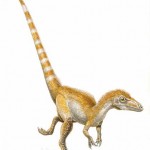
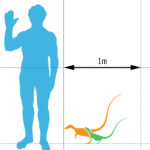

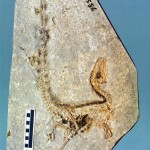
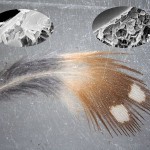
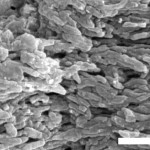

Sorry, comments are closed for this post.